The cult classic mobile RPG finally gets its due, for lovers of mechanics over story who can rise to the demands of its extreme challenge.
It’s a bit surreal playing Fantasian with randomised Final Fantasy battle music. But it’s not unfitting. At one point I was in a fraught battle against a giant fiery salamander as the unmistakable piercing strings of One Winged Angel distracted me, as if Sephiroth himself was about to swoop down from the sky. To help or hinder, who can say.
Fantasian Neo Dimension review
Fantasian feels like a lost Final Fantasy game emerging from the 90s and that’s only reaffirmed by the inclusion of actual Final Fantasy battle music, which has been added to this re-release of the game. And for a time it really was lost. Developed by Mistwalker, itself a studio founded by the father of Final Fantasy Hironobu Sakaguchi, and with music from long-time Final Fantasy series composer Nobuo Uematsu, Fantasian was originally released – and subsequently trapped – exclusively on Apple Arcade back in 2021.
Now Mistwalker has reunited with Final Fantasy custodians Square Enix to publish this PC and console re-release as Fantasian Neo Dimension, with a little help from Final Fantasy 14 and 16’s Naoki Yoshida. This is a homecoming, then, the gang back together to share with the world a curio intended to be Sakaguchi’s final, final fantasy.
Watch on YouTube
What characterises Fantasian most of all is its blend of old school genre trappings and modern sensibilities. Sakaguchi is uncompromising in his vision – for better or worse – resulting in a game aimed squarely at longtime RPG players and demanding a great degree of expertise. Yet this re-release is undoubtedly a more approachable version, if still not quite definitive.
That blend of old and new is exemplified by the game’s visuals – it’s what initially impresses most and lends the game its unique identity. In a callback to the past, the detailed backgrounds are static with 3D character models; but they’re formed from actual hand-made dioramas that have been built, photographed, and digitalised. Environments are tangible, real places with something of the clean futuristic look of Final Fantasy 8 making way for dusty town streets, lush forests with tiny, bushy flora, and alien-like landscapes of pustules and mushrooms and a soft fuzzy textured ground that looks like it would make you sneeze. All of this is presented through contrasting angles as the camera swoops and soars, revitalising the lost art of fixed perspectives. It’s a beautiful game.
Another example of old-meets-new is the turn-based battle system and the unique targeting mechanic for its characters. Attacks and skills must be carefully aimed at enemies: some in a piercing straight line, some in wide AoE circles, and some curving behind to the back line. Along with an explicit turn order, there are enough tactical options to satisfyingly clear a screen of enemies without taking a single hit. Bosses, too, make use of this system, with hidden weak points requiring not just meticulous aiming, but attentive understanding of mid-battle animations to specifically time critical attacks. Landing a death-from-above strike right when a boss yawns upwards makes me feel like Sephiroth, just as his iconic music reaches a crescendo.
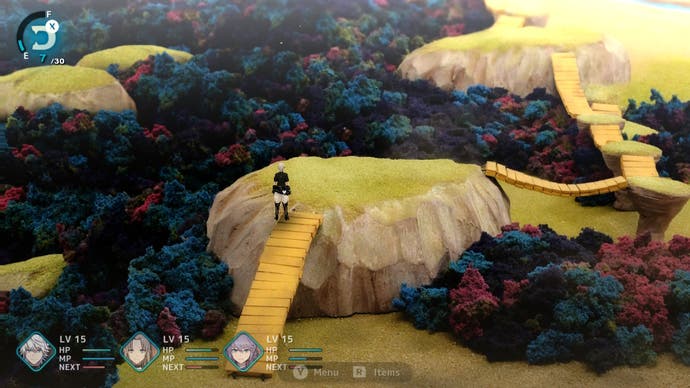
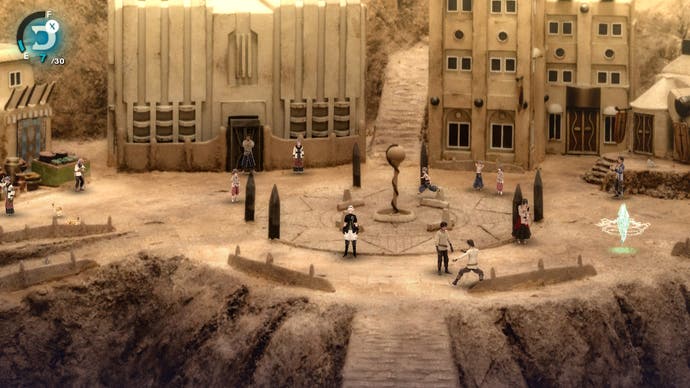
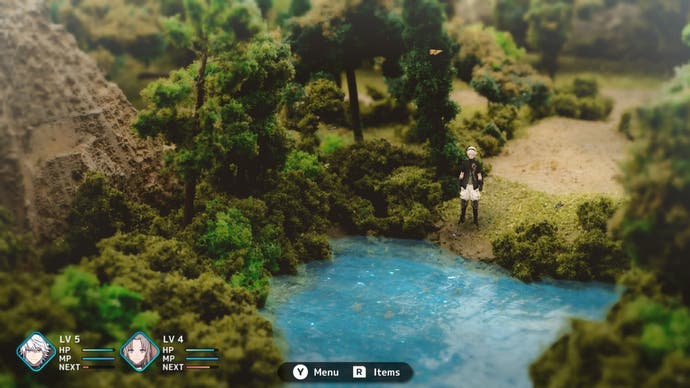
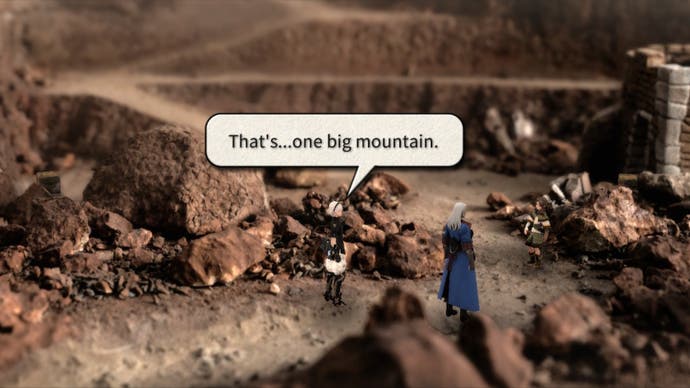
Fantasian’s most innovative feature, though, is the Dimengeon system. It’s genius, essentially allowing you to collect random encounters into a single pot to then battle all at once at your discretion. This allows for exploration without interruption, and a switch to battling when the opportunity suits. No more running to a save point at low health praying an enemy doesn’t randomly strike! What’s more, Dimengeon battles take place in a void where players are aided by various buffs: aim carefully and you’ll do extra damage, cure afflictions, and steal turns. It’s wonderfully strategic and the sort of obvious solution to a genre frustration I hope gets copied elsewhere.
Outside of its underlying systems, however, Fantasian’s firm roots in the past also risk becoming its undoing, as its characters and plot fail to innovate in the same way its gameplay does. That’s partly due to an overreliance on parallels with Sakaguchi’s earlier games, and genre stereotypes that have themselves been popularised by Final Fantasy. Once again, Fantasian sits at the convergence of science, technology, magic and religion, grappling with typical sci-fi questions of what it means to be human, and scheming godlike figures. But it never quite offers a novel viewpoint on these timeless themes. Similarly, while poetic moments of storytelling accompanied by gorgeous hand-drawn artwork are a highlight, elsewhere there are awkward womanising moments that already felt awkward in 2021, and feel doubly so now three years later. Despite occasional charm, the main narrative is bogged down by cringeworthy dialogue and tired characterisation we’ve seen countless times before.
Yes, this is another fantasy game with an amnesiac, spiky-haired protagonist: Leo. There’s Kina, the wispy, ethereal ingénue who’s at one with nature and (obviously) the healer of the group. She’s Aerith-coded and, along with the forthright, Tifa-esque Cheryl, forms a tedious love triangle with Leo. Admittedly, spotting Final Fantasy references can be a fun distraction for long-time fans – here’s Ez, a male blend of Yuffie and Rikku! – but it only serves to highlight Fantasian’s status as a Final Fantasy ‘best of’ that lacks its own originality, so I never felt fully endeared to them. There’s even a character called Sid (even if it is spelled differently).
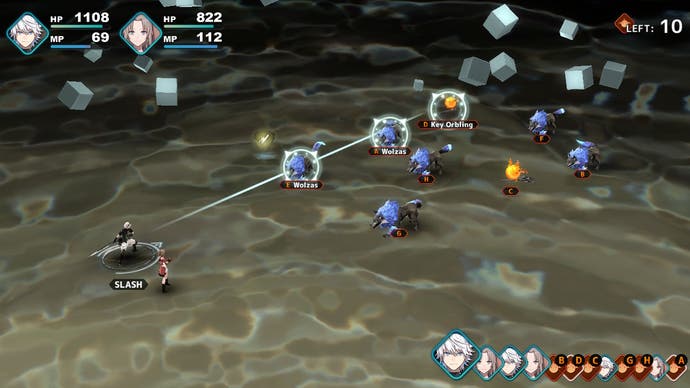
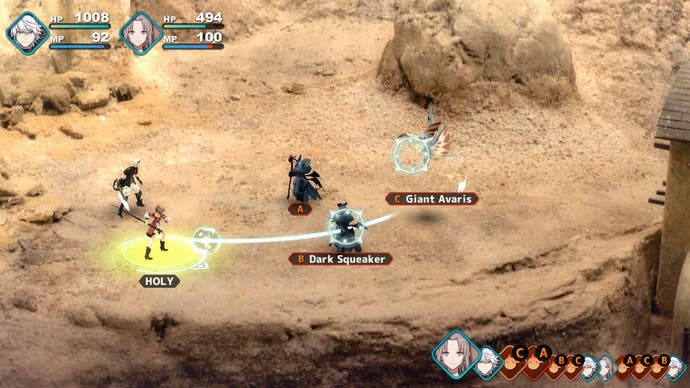
Yet there’s one reference I especially enjoyed: Fantasian’s two-part structure is directly borrowed from Final Fantasy 6, with a linear story-driven first half and a character-driven, open-ended second half. Fantasian itself was released in two parts, which Neo Dimension converges into a singular experience, though you still feel the tension of that divide as everything shifts gears halfway through and improves considerably.
The game’s first half, of course, establishes its world and tone, steering you from place-to-place as the story progresses and adding new party members to diversify combat. It’s fun, with the strength of combat just about outweighing those disappointing, aforementioned stereotypes. But often my favourite part of any RPG is the moment it bursts open – when you invariably receive an airship of some sort, and you take a step backwards to see the world as a giant puzzle of interactions, questlines, ultimate weapons, and super bosses. It’s then that the best kinds of RPGs can truly test your knowledge, and you gain full mastery of its systems.
That’s something both genre greats Final Fantasy 6 and Chrono Trigger achieve in abundance, and Fantasian follows suit with a transformative second half I ultimately grew to love. In part that’s because its story finally gets a little weird and its multiple pieces click into place, the overarching plot somewhat sidelined for a focus on shorter character-led episodes. Yet even then, it feels like the story is there to serve the gameplay as these episodes ultimately expand each character’s combat repertoire. Fantasian’s second half cements itself as an RPG for lovers of gameplay over story, and for those who revel in tweaking character builds to get the most out of its strategic battles.
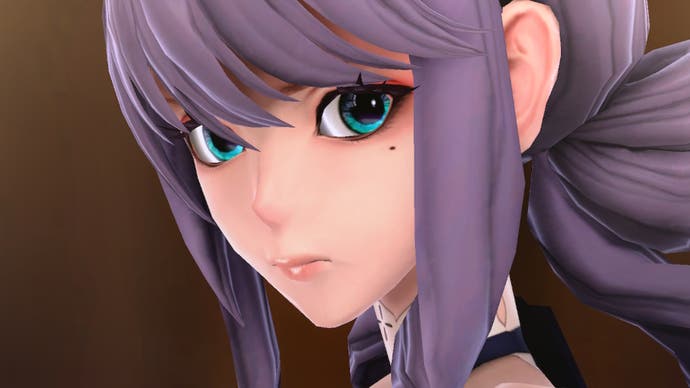
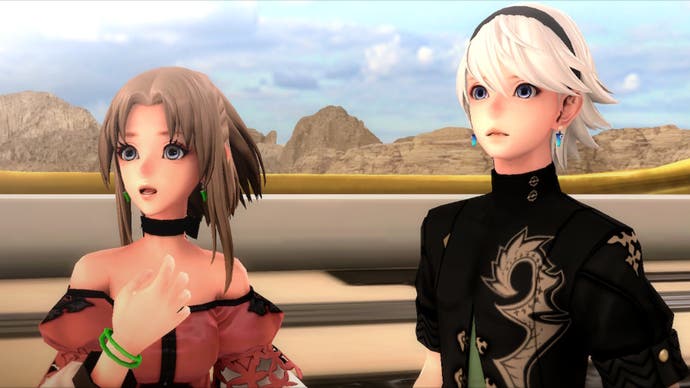
The addition of a much-welcome skill tree in the second half is a prime reason for this, providing newfound freedom and further complexity to character customisation. I wish this had been introduced earlier to give the first half of the game a bit more direction, though again there are story reasons for this change. Still, its introduction dramatically opens up Fantasian’s combat as the game’s previously fixed characters can evolve in multiple directions. What’s more, unlocking new branches is directly tied to both the story and as a reward for exploration, together with discovering materials for the newly-introduced weapon upgrade system. And that’s on top of extensive accessory options providing buffs, as well as an expanding cast of playable characters to freely swap between in battle. By its second half, Fantasian has layers of strategy and complexity that all neatly interlock, giving enough depth to appease even the most hardened of RPG nerds.
What I particularly appreciate in the second half is Fantasian’s trust in the player. While there is a quest log to keep track of everything, it’s mostly up to you to find quests through exploration and chatting with NPCs. It’s as if the first half is an extended tutorial, while the second half is a real test of your understanding of the world: your memory of locations, navigating its environments, and the intricacies of combat. I found this kind of challenge immensely satisfying to overcome and it made me appreciate the construction of the game on a mechanical level. More questlines had me peeling back the layers to explore unforeseen areas of the world, spurred on by a melodic score that’s unmistakably Uematsu’s work. The music adds to the nostalgia, but with a dash of Vangelis-esque electronica in a nod to the game’s Blade Runner-inspired themes and world. This is Fantasian at its best, a collision of old and new.
Boss battles, by extension, feel like something of an exam, though sometimes that challenge can lead to frustration. As character development leans more on abilities acquired through the skill tree than traditional levelling, boss battles act like puzzles to test your knowledge of those skills and often require specific moves and strategy to best. This is great! It tests your mind more than your propensity to grind for sheer power. Yet some bosses really do test your patience, with gimmicks resulting in complete failure after a lengthy struggle. Perhaps that’s an overwhelming number of minions, strategies requiring one specific move by one specific character (tucked away on the skill tree), or shimmering clones that make the true boss impossible to spot. Many of these bosses are technically optional, but they feel mandatory to reach the higher levels required for later quests. At times Fantasian isn’t just punishing, it tips firmly into unfair.
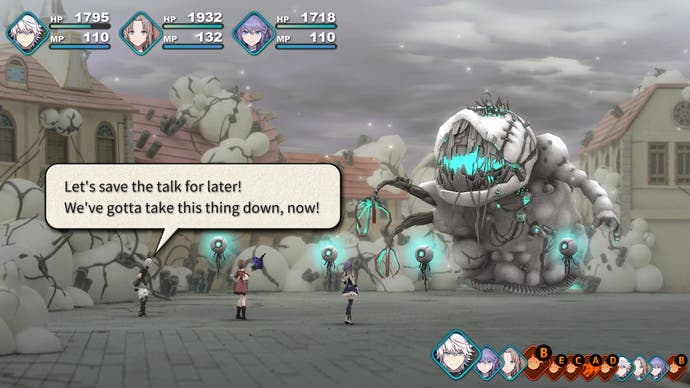
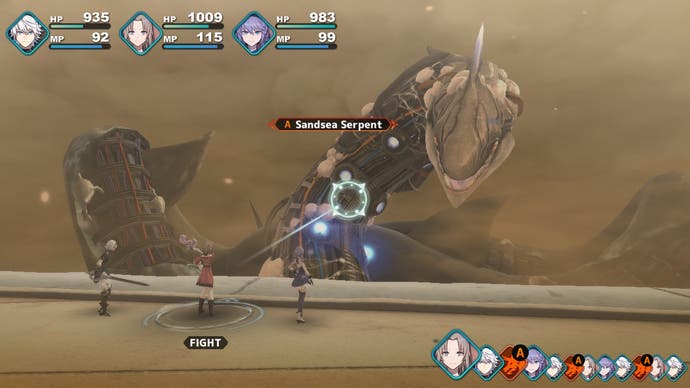
And that’s on Normal difficulty. The initial release of Fantasian was notorious for its challenge, so much so a new easier difficulty level has been introduced here. Sadists can still opt for the original difficulty level, now dubbed Hard, but the new Normal ensures the game is (mostly) approachable, despite major spikes in later areas. Beyond its wider release on PC and consoles, these new difficulty options are the primary reasons to recommend this particular version of Fantasian.
Fantasian Neo Dimension accessibility options
Message speed options. Two difficulty options. Basic volume level options. No subtitle or visual options. No control customisation.
It’s still not quite definitive, though. It’s clear Fantasian was designed for smaller touchscreens – all those curved aiming lines had fingers in mind – and blown up to a larger scale those beautiful backgrounds feel stretched and blurred. I played on Switch and even in handheld mode the visuals lacked the sharpness of a smaller mobile screen, while performance stutters were frequent if not totally distracting. The exploration controls are most awkward of all: rather than tapping to auto-run, characters are now directly controlled but, as the camera flips angles, the direction of control must be constantly re-aligned to match the new perspective. No, sadly the old touch controls haven’t been transferred to Switch. It’s something I got used to over time, but it’s a quirk that causes this re-release to fall short.
I’m glad Fantasian Neo Dimension exists for bringing this cult classic to a wider audience. I love its modern innovations, its tactical combat, and the depth of its world, which all ensure the game thrills on a mechanical level. Yet a reliance on genre conventions sees Sakaguchi clinging to his Final Fantasy past, resulting in some outdated storytelling. And while this new version is more approachable, it’s not quite the smoothest transition to bigger screens. Fantasian is a game that demands much of its players, to rise to its extreme challenge and overlook flaws. Persevere, though, and there’s satisfaction and nostalgic highs to be found akin to the very best of the genre.
A copy of Fantasian Neo Dimension was provided for review by publisher Square Enix.
function appendFacebookPixels() { if (window.facebookPixelsDone) return; !function(f,b,e,v,n,t,s) {if(f.fbq)return;n=f.fbq=function(){n.callMethod? n.callMethod.apply(n,arguments):n.queue.push(arguments)}; if(!f._fbq)f._fbq=n;n.push=n;n.loaded=!0;n.version='2.0'; n.queue=[];t=b.createElement(e);t.async=!0; t.src=v;s=b.getElementsByTagName(e)[0]; s.parentNode.insertBefore(t,s)}(window, document,'script', 'https://connect.facebook.net/en_US/fbevents.js');
fbq('init', '560747571485047');
fbq('track', 'PageView'); window.facebookPixelsDone = true;
window.dispatchEvent(new Event('BrockmanFacebookPixelsEnabled')); }
window.addEventListener('BrockmanTargetingCookiesAllowed', appendFacebookPixels);
Source link
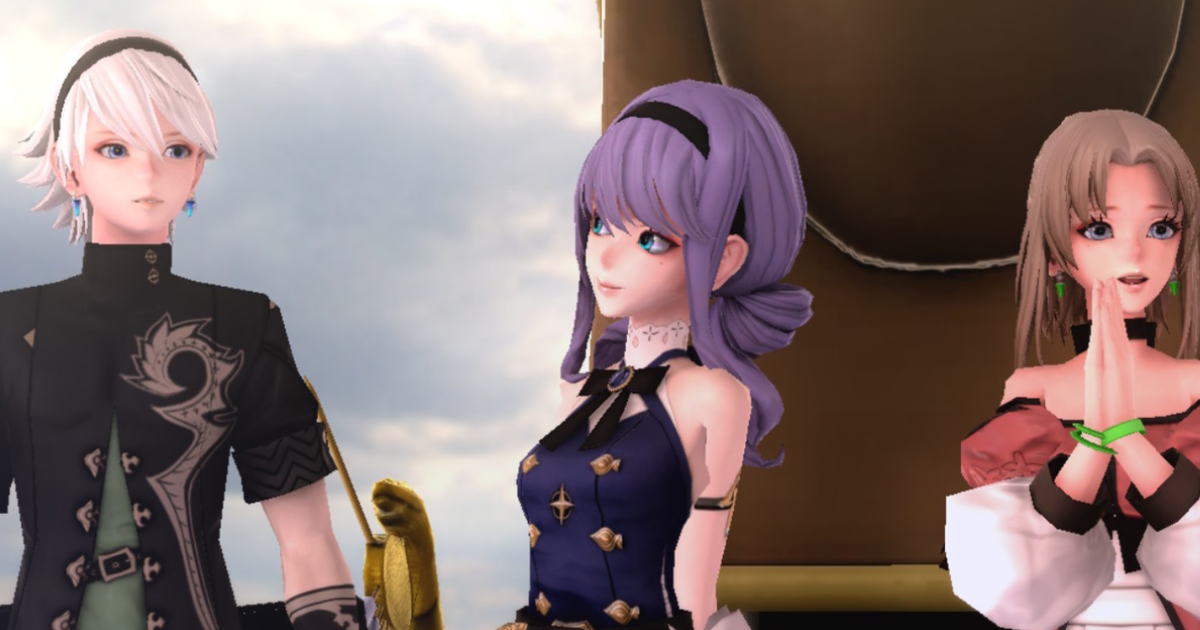
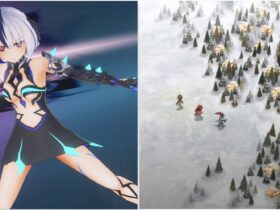
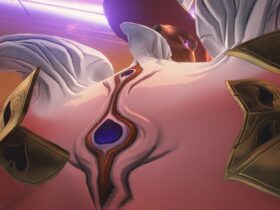
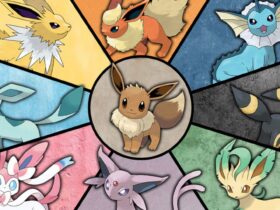
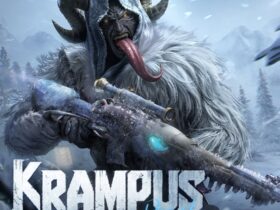
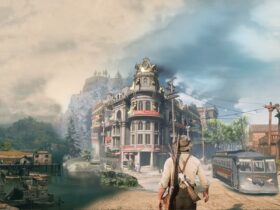
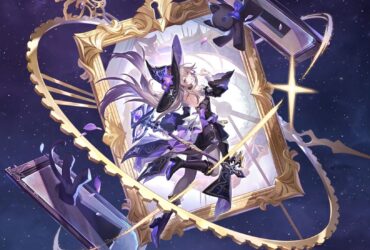
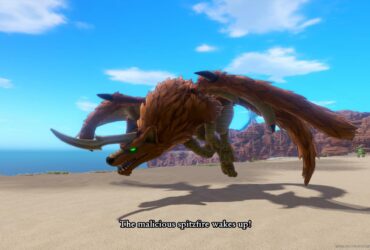
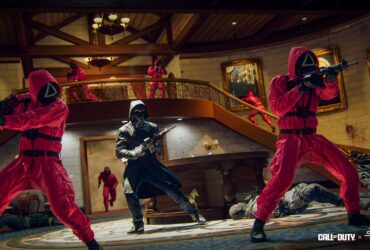
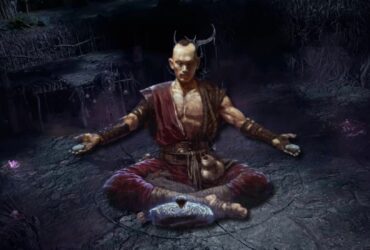
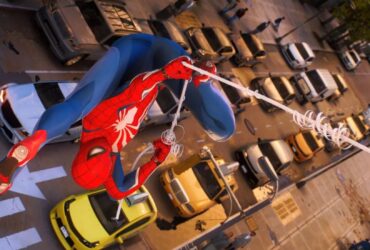
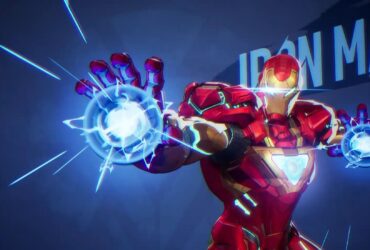
Leave a Reply